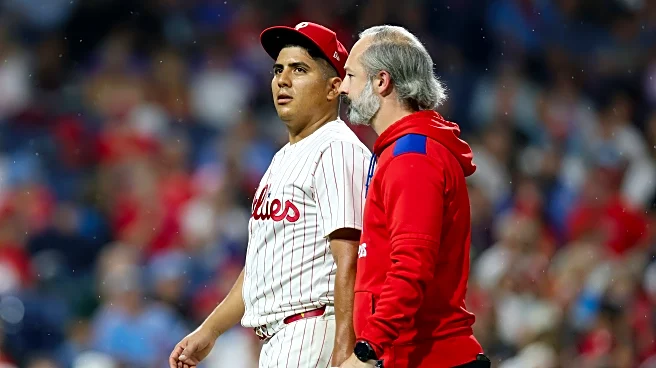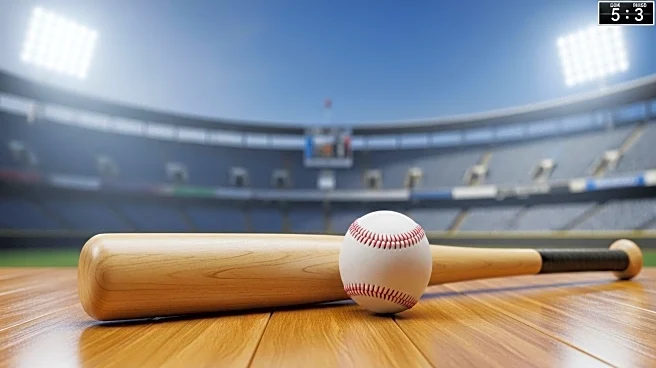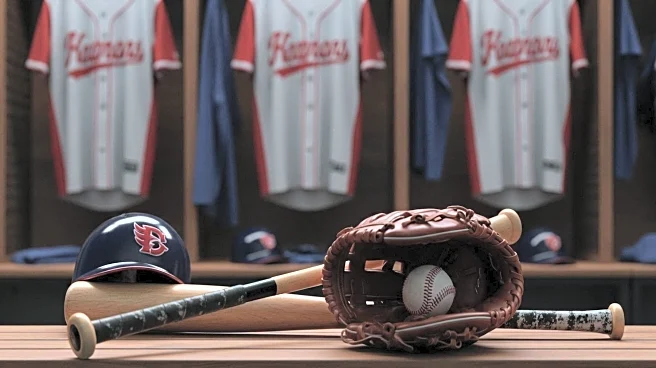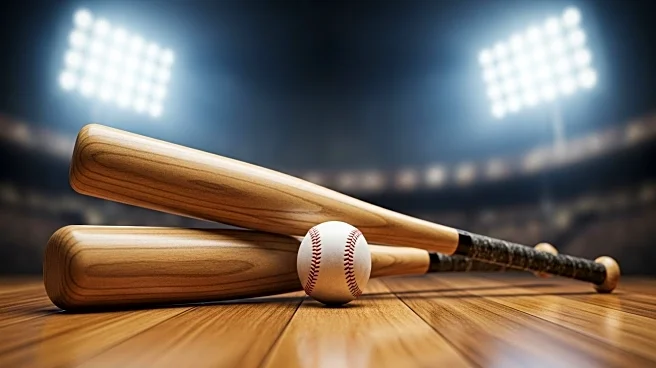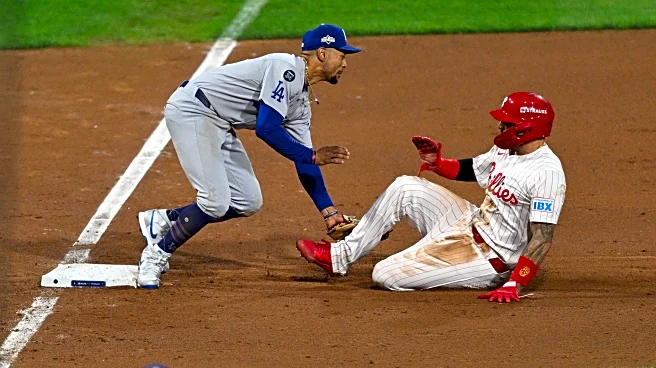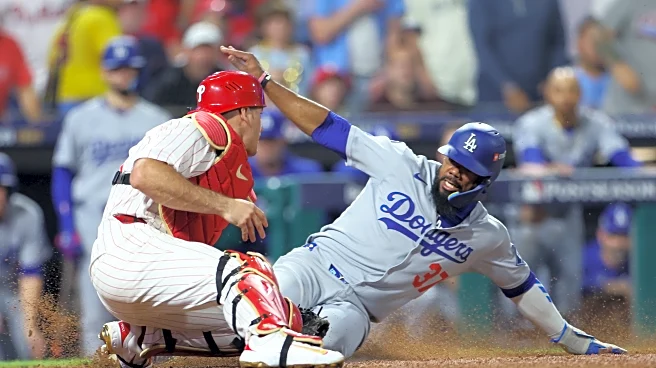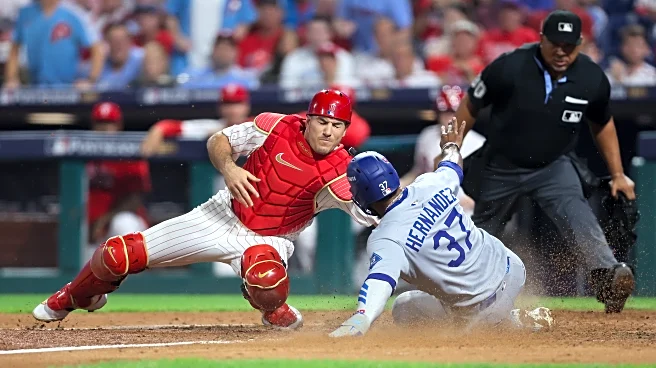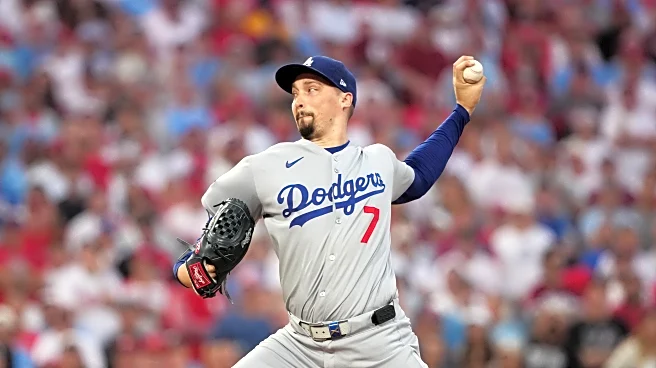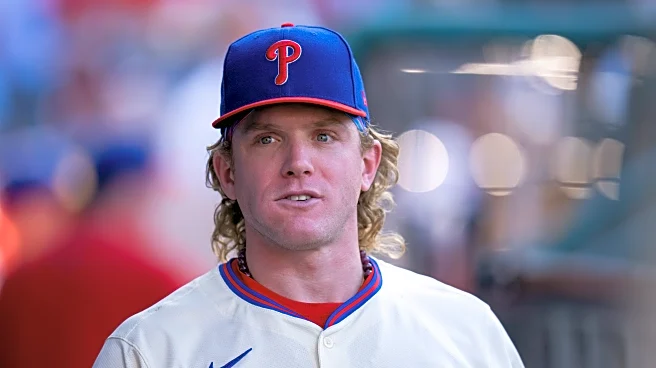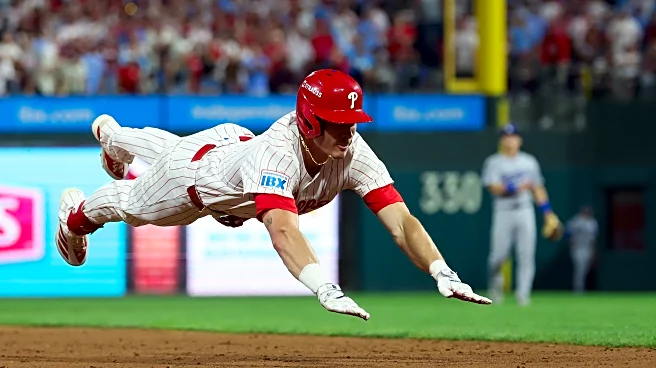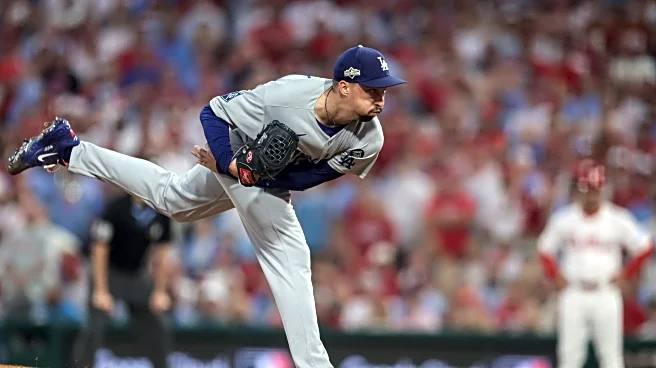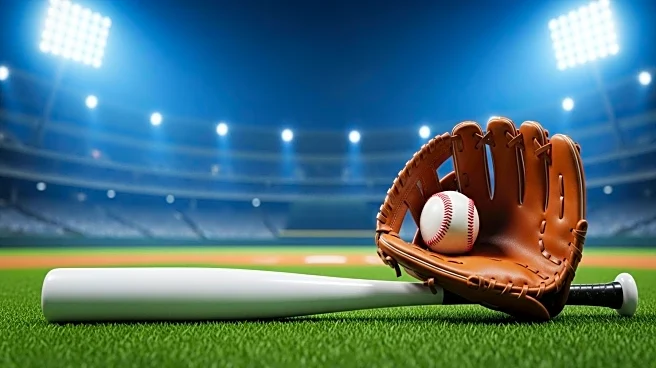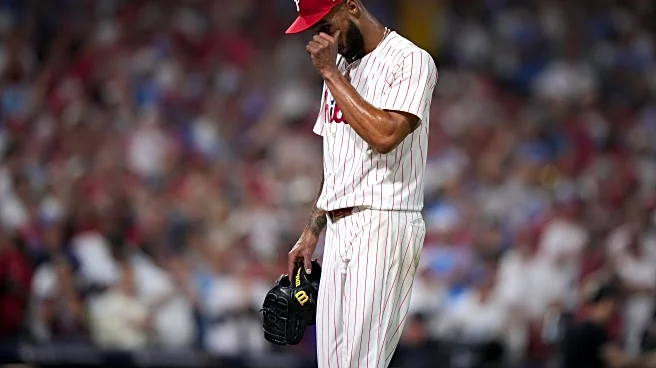Following another gut-punch loss in Game 2 of the NLDS that put the Phillies on the brink of elimination, manager Rob Thomson made the surprising announcement that Aaron Nola would start Game 3 with Philadelphia’s season on the line, not Ranger Suárez as was widely assumed. Suárez will instead pitch out of the bullpen after Nola exits.
The team and Thomson insist that Suárez is healthy, but they still decided to
start Nola anyway. This all comes after Thomson expressed that Suárez was “available” to pitch out of the bullpen in both of Game 1 on Saturday and Game 2 on Monday, but ultimately, he never did as the Phillies watched their bullpen blow a lead in Game 1 and their offense be almost non-existent in both games.
Let’s try to unpack this information. It would appear, at least by what the Phillies and specifically Thomson has said over the last week, that Nola was always the plan for Game 3. Thomson said after Game 2 that the team would rather not use Nola out of the bullpen where he’s never appeared, whereas Suárez has had great success in relief including in the postseason. This decision right on the surface is hard to understand, as Suárez has been objectively better than Nola this season, and it’s not even particularly close. The goal should have been to avoid using Nola unless absolutely necessary, not to find a role for him by moving other players around.
Suárez had an uneven second half of the season, but he still finished 12-8 with a 3.20 ERA in 26 starts. Nola on the other hand had an absolute nightmare of a season, logging a 6.01 ERA in 17 starts and spending roughly half of the season on the injured list. It’s essentially impossible to argue that Nola is a better option based off of 2025 performance alone, even if he finished the season with a strong start against the Twins.
The bullpen experience argument makes some sense on the surface, but that again ignores all of 2025. Even then, if Suárez was never going to start a game this series, then why has he not been used out of the bullpen at all?
Thomson said that Suárez was only going to be used either before the sixth inning or in extra innings in Game 1. That’s a reasonable stance if Suárez was indeed going to start Game 3, as it would’ve allowed the team to use him in an emergency if something happened to Cristopher Sánchez early in Game 1 and then still have him be able to start Game 3, albeit in an abbreviated form. But again, if Suárez wasn’t going to start, then why keep him sidelined entirely?
Suárez could’ve entered in the faithful 7th inning that saw David Robertson falter in a wrap-around inning and Matt Strahm give up the back breaking three run homer to Teoscar Hernandez. The choices were to do what the Phillies did, have Strahm start the inning to face two righties and then Shohei Ohtani, or have Kerkering do the same. Each option has its own downside, but it’s not hard to believe that opting to have a 40-year-old reliever attempt a wrap-around with a fully rested bullpen and an “available” Suárez may have been the worst of the bunch. And again, if the Phillies and Rob Thomson knew that Suárez wasn’t going to start Game 3, then why didn’t he seem to factor into the calculus at all in Game 1?
Then there’s also the implication this decision made on the roster for the NLDS. The Phillies elected to carry 12 pitchers, meaning that they would have a nine-man bullpen because only three starting pitchers were needed with the built-in off days. They chose to carry all three of Nola, Walker Buehler, and Taijuan Walker. Originally, carrying Nola made sense as an emergency option if something happened to either Sánchez, Luzardo, or Suárez and they couldn’t make a start. But it was widely speculated that Nola likely wouldn’t pitch until the NLCS if the Phillies got there, as Buehler and Walker would serve as mop-up or emergency in-game bulk.
That was under the scenario that Suárez would be starting one of the games. Now that he isn’t, and the team hasn’t used him out of the bullpen, you effectively have three pitchers for a similar role. Under the communicated plan, Suárez was only a break-glass-in-case-of-emergency-bulk reliever. That renders one of Buehler or Walker moot, as the Phillies only needed someone to pitch in a blowout rather than take over for an injured starter mid-game. This complaint may seem like nitpicking, but this decision had ramifications after the Harrison Bader injury. The Phillies elected to carry Edmundo Sosa, Otto Kemp, Weston Wilson, and the platoon of Nick Castellanos and Max Kepler as their bench outside of the backup catcher. Only three of those players can be reasonably expected to play the outfield, with one half of the platoon starting. Kemp ended up playing left field in Game 2, but it’s a position he has now 12 career MLB games starting.
The Phillies down the stretch relied heavily on their platoons and pinch hitting to supplement their outfield, and it worked to success. But that was only possible with Bader starting every day. Without him healthy enough to run or play the field, the Phillies were short one option off the bench in Game 2, as Bader was only able to pinch hit. The problem with this reared its ugly head in the ninth inning with the bunt fiasco. We won’t go over that here (as Ethan already did), but that was an opportunity where the Phillies really could have used an extra player off of the bench to run for Castellanos at second, as Wilson had to be saved to run for the injured Bader.
The 40-man options before the series were limited to Johan Rojas, Garrett Stubbs or Rafael Lantigua. Rojas is obviously the ideal candidate, but a late season injury at AAA likely ruled him out of making the roster. Stubbs is a decent runner, but he can’t play anywhere except catcher. Lantigua has 145 Minor League games of experience in playing the outfield, including four games at Lehigh Valley this season. Again, to be fair, you really don’t want to have to use either of Stubbs or Lantigua in a postseason game. But both would have been better options than Castellanos to serve as the tying run in scoring position or to be used to run for the injured Bader if he were to reach base as he did. Instead, you were left with what occurred, as the Phillies carried two pitchers to perform the same role, neither of which are likely to appear in the series now.
To close, the Phillies insist that there is nothing physically wrong with Suárez, despite the lefty leaving his last start of the season on 9/27 in the fifth inning after taking a comebacker to the leg. That was in the midst of a start where he allowed 3 runs on 9 hits in just 4.1 innings pitched. The only way any of this plan makes sense is if Suárez is nursing some sort of injury. If we’re taking the team at face value though, they have hereto completely sidelined their consensus second-best healthy starting pitcher to an emergency reliever role only to finally plan to deploy him behind a pitcher who had a career worst year with the season on the line. The Dodgers elected to deploy starters out of the bullpen to help mask their biggest weakness, while the Phillies have elected to create a new one.
